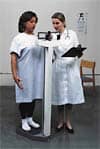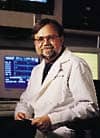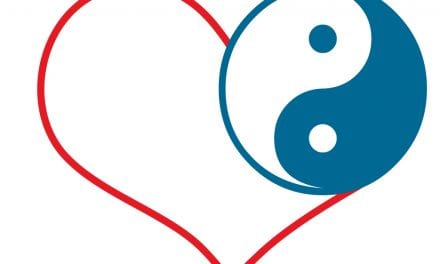Optic Nerve Disease May Cause Sleep Disorders
Young people with eye diseases that damage the inner part of the retina and optic nerve are significantly more likely to have sleep disorders than those with other types of eye disease or those with normal vision, according to researchers at the Washington University School of Medicine in St Louis.

“We suspect these patients have difficulty using daylight to synchronize their internal rhythms to the outside world,” says senior investigator Russell N. Van Gelder, MD, PhD, assistant professor of ophthalmology and visual sciences and of molecular biology and pharmacology at the School of Medicine.
In recent research, Van Gelder found that the retina contains not only the photoreceptor cells called rods and cones, which translate light into vision, but also the nonvisual photoreceptor cells called intrinsically photosensitive retinal ganglion cells (ipRG cells) that function as the eye’s “light meter.” These ipRG cells are concentrated together at the head of the optic nerve.
The results of the study appeared in the February issue of the journal Ophthalmology.
 BRPT Ramps Up Communication BRPT Ramps Up CommunicationA new quarterly email newsletter will help those with the Registered Poly-somnographic Technolo-gist (RPSGT) credential and other sleep professionals stay abreast of upcoming Board of Regis-tered Polysomnographic Technologists (BRPT) events and examination-related dates. The newsletter, called the BRPT Insider, also may feature information on relevant issues, tips for credentialed technologists, and updates on BRPT’s job analysis. Those who do not hold the RPSGT credential can sign up online at www.brpt.org. The McLean, Va-based nonprofit certification board also recently elected three new directors and the 2004-2005 president. Mark DiPhillipo, RPSGT, of Lafayette Hill, Pa, will lead the board as president through 2006. The first-time board directors are Niels C. Rattenborg, PhD, RPSGT, of Madison, Wis (nominated by the Sleep Research Society); Melissa K. Akali, REEGT, RPSGT, of Lawrenceville, Ga; and Buddy Marshall, CRT, RPSGT, of Bigelow, Ark. |
Apnea Patients Misdiagnosed With Hypertension
Sleep apnea and hypertension may not be as intrinsically linked as researchers once thought. In a study, one third of patients with sleep apnea who were physician-diagnosed with hypertension actually had “white coat hypertension” (WCH), a condition characterized by increased blood pressure during a visit to a doctor’s office.
The study, published in the March issue of CHEST, also found that patients with sleep apnea and WCH had a more difficult time falling asleep and had longer periods of wakefulness after falling asleep than sleep apnea patients with normal blood pressure or sustained high blood pressure.
“Although the relationship between hypertension and sleep apnea is well established, our results suggest that the occurrence of WCH could lead to overdiagnosis of hypertension among patients with sleep apnea, thereby leading to potentially flawed conclusions regarding the causative association of hypertension and sleep apnea,” says lead researcher Francisco Garcia-Rio, PhD, of La Paz University Hospital in Madrid, Spain.
In a corresponding editorial, Hector O. Ventura, MD, of the Cardiomyopathy and Heart Transplantation Center, Ochsner Clinical Foundation, in New Orleans says that the medical community should be cautious in using the study data in clinical practice since the results are preliminary.
NSF Fights Drowsy Driving Online

Visitors to the site, www.drowsydriving.org, can get tips on warning signs and symptoms, courses of action to follow if one becomes sleepy behind the wheel, tools for better sleep, and information about new detection devices. The Web site also features research studies and surveys on drowsy driving, updates on reported drowsy driving crashes, press articles, legislative actions, and a memorial page with stories about people who have died because of drowsy driving.
“Sleepiness has no place on the road. Yet crashes caused by a driver who was drowsy or actually fell asleep behind the wheel occur almost daily in this country and in countries around the world,” says Richard L. Gelula, NSF’s executive director. “This new Web site is the first of many new NSF initiatives dedicated to preventing drowsy driving and the needless deaths and injuries that often result.”




